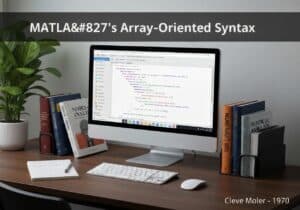To automatically check whether a model of a system meets a given specification.
- Methodologies: Customers & Marketing, Product Design, Quality
Model Checking

Model Checking
- Quality Assurance, Quality Control, Risk Management, Safety, Software Engineering, Software Testing, Systems Modeling Language (SysML), Validation, Verification
Objective:
How it’s used:
- An automated technique for verifying the correctness of a hardware or software system. It explores all possible states of a system to check whether it satisfies a given property.
Pros
- Can find subtle errors that testing might miss; Can be fully automated.
Cons
- Can be computationally expensive and may not be feasible for large systems; Requires a formal model of the system.
Categories:
- Engineering, Quality
Best for:
- Verifying the correctness of safety-critical systems, such as a protocol for communication or a control system for a nuclear reactor.
Model Checking is widely applied in various domains such as telecommunications, automotive, aerospace, and medical devices, where system reliability and safety are paramount. In these industries, where failures can result in catastrophic consequences, the methodology can be employed during different phases of project development, including the design and verification stages, to ensure that specifications are met without ambiguity. Participants in this process typically include software engineers, hardware designers, and verification engineers who collaborate to define the properties that the system must satisfy. Examples include verifying communication protocols in network systems, ensuring that algorithms for automated vehicles adhere to safety constraints, or checking signal processing systems for correctness in safety-critical applications. The automated nature of Model Checking allows it to explore a comprehensive state space, identifying corner cases and edge situations that manual testing might overlook, thereby enhancing the reliability of the system. Tools such as Spin, NuSMV, and PRISM are specifically designed for these purposes, providing interfaces for model description and property specification, making them accessible to technical teams across different domains for effective verification. The adoption of Model Checking not only improves the assurance of system correctness but also reduces time-to-market by catching defects early in the development cycle.
Key steps of this methodology
- Define the system model and abstraction level, ensuring it captures all relevant system behaviors.
- Specify the properties to be verified using temporal logic or other formal languages.
- Construct the state space representation of the system, including states, transitions, and variables.
- Apply model checking algorithms to explore the state space exhaustively.
- Check satisfaction of the specified properties against the state space.
- Identify and document any properties that are violated during the checking process.
- Iterate on the model and verification process to address identified issues and refine the system model.
Pro Tips
- Utilize counterexamples generated during model checking as a basis for refining system designs and detecting underlying specification issues.
- Implement abstraction techniques judiciously to manage state spaces while retaining important properties, balancing performance with verification completeness.
- Employ incremental model checking to verify system changes progressively, allowing for efficient detection of regressions without full re-evaluation of the entire system.
To read and compare several methodologies, we recommend the
> Extensive Methodologies Repository <
together with the 400+ other methodologies.
Your comments on this methodology or additional info are welcome on the comment section below ↓ , so as any engineering-related ideas or links.
Historical Context
1970
1970
1970-01-01
1980
1980
1980
1990
1970
1970
1970
1980
1980
1980
1986-01-01
1990
(if date is unknown or not relevant, e.g. "fluid mechanics", a rounded estimation of its notable emergence is provided)















Related Posts
Manufacturing Execution System (MES)
Manufacturing Control Plan
Manual Testing
Manual Handling Assessment Charts (MAC)
ManTRA (Manual Tasks Risk Assessment Tool)
Make-to-Stock (MTS)